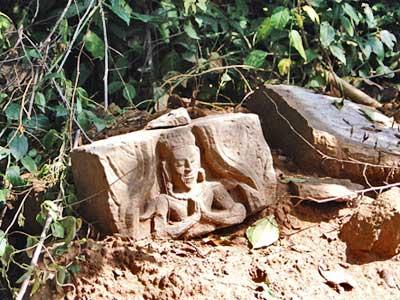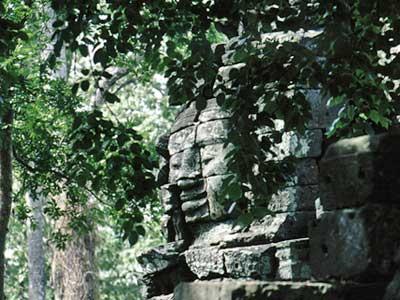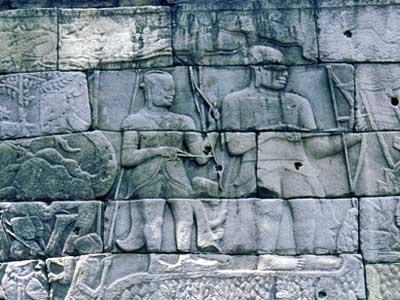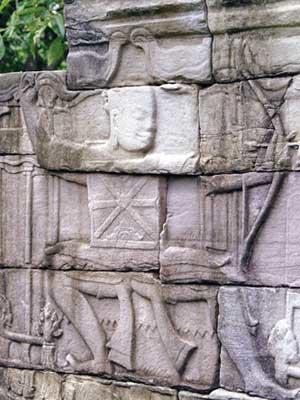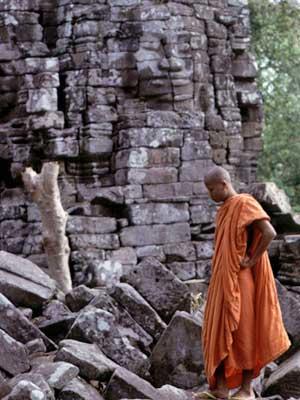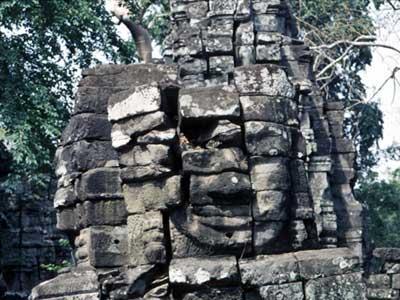A complex of eight temples deep in the Cambodian jungle, Banteay Chhmar was commissioned by the twelfth-century Khmer ruler Jayavarman VII in honor of five heroes, including his son, who died defending the Khmer empire against the Champa kingdom. Built over nine square kilometers and surrounded by a moat, the site echoes the architectural layout of the Khmer temple complexes of Angkor Wat and Angkor Thom. The site is renowned for its beautifully rendered bas-reliefs, which depict the war between the Khmer and Champa kingdoms Despite its remote location, the site was affected by the chaos of Cambodia’s civil war in the 1970s. During the reign of the Khmer Rouge, Bantea Chhmar was unattended, and many of the temples were engulfed by tropical foliage. In the aftermath of the Khmer Rouge period, the site fell victim to significant looting of bas-reliefs and statuary. This situation was a contributing factor in Banteay Chhmar’s inclusion in the 1998 World Monuments Watch. In 1999, looters dismantled two large sections of the western gallery wall and stole unique bas-reliefs of multi-armed Avalokiteśvaras. The site was included on the 2000 Watch as well.
1998, 2000 and 2002 World Monuments Watch
In the late 1990s, as tourism increased in Cambodia and travelers wished to see this extraordinary complex, visitors were often unaware of the significant dangers posed because of the instability of the structures. There were fears, at the time, of imminent collapse of important areas of the temple. After the collapse of the southwestern tower in 2003, WMF carried out research on the site, including a survey of hazardous trees. WMF secured funding from American Express to facilitate the removal of dangerous vegetation and the implementation of remedial measures to improve the stability of remaining structures at the site. The participation and training of Cambodians was an important component of the program, and members of the Royal University of Fine Arts, Faculty of Archaeology, undertook a thorough architectural and historical study of the monument. Tourist amenities were created and substantial security measures were put into effect to deter looters and vandalism.
Banteay Chhmar is one of the largest Khmer complexes built outside of Angkor. The simultaneous dedication of the Buddhist temples and shrines to Hindu divinities shows the religious tolerance of the King Jayavarman VII at the time of construction. Although Hinduism returned as the state religion of the Khmer Empire in the thirteenth century, thousands of images of Buddha were not destroyed at Banteay Chhmar, in sharp contrast to those of Jayavarman VII’s other constructions within the city of Angkor. Much of the site’s history is recorded in sandstone inscriptions; typically they concern the use of the temples, but often provide names and information about the state of the kingdom and details of the practices of Hinduism. The site is important to the local community not only for the employment and economic benefits that conservation work and tourism provide, but also because of the continuing use of the site as a place of veneration and worship.

